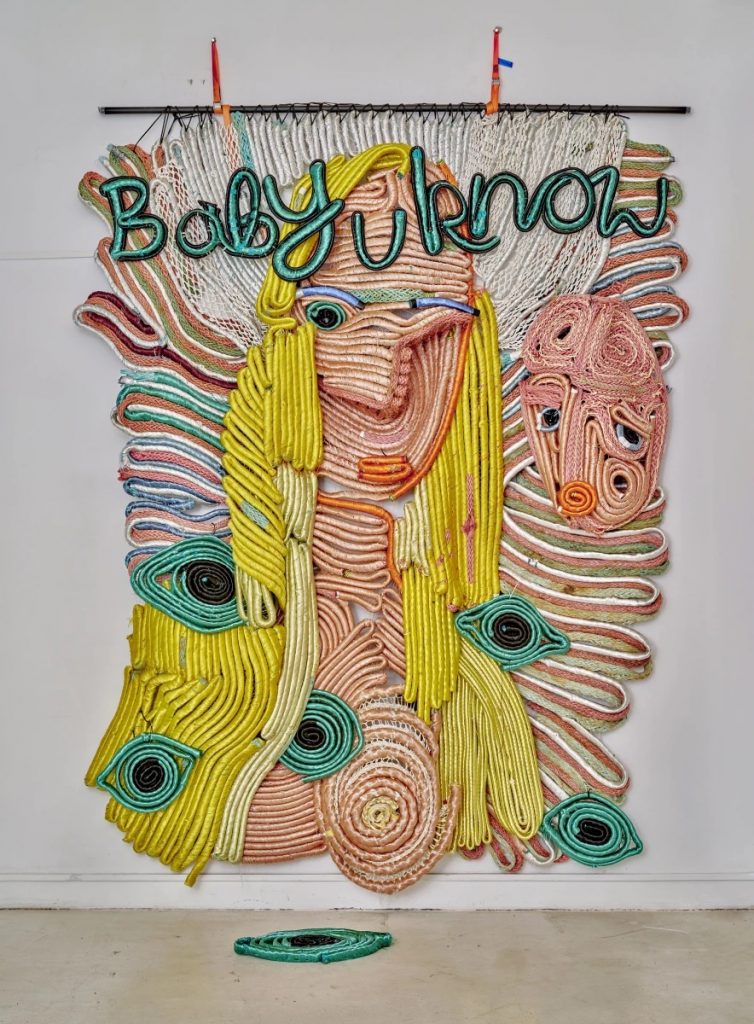
Coming soon
Coming soon
Select type
During Art Rotterdam, you will see the work of hundreds of artists from all over the world. In this series, we highlight a number of artists who will show remarkable work during the fair.

When the German artist Joana Schneider moved from Munich to The Hague, she immediately fell in love with the sea, purely because she had rarely seen it before then. She started studying fashion at the Royal Academy of Art, but she wasn’t sure yet where she wanted to end up. When she discovered the ‘Textile and Fashion’ department at the same institute, the pieces started to fall into place and in 2018, Schneider graduated as a textile designer. In the harbour, she became more familiar with the nets that were being used by the fishermen. She was surprised to find that these ropes and nets are only in use for two weeks, only to be thrown away. She decided to specialise in processing the heavy, stiff material and has since developed various techniques for that. She enlisted the help of fishermen and craftsmen in Scheveningen and Katwijk, who introduced her to their unique knotting and weaving techniques. She then combines these techniques with contemporary techniques and other crafts such as traditional roofing with thatch. For her graduation project at the KABK, Schneider received the Keep an Eye Textile & Fashion Award.
Schneider’s work conveys a deep appreciation for craftsmanship, for the creativity of people who work with their hands. Indirectly, she also plays with gender norms, by combining “feminine” materials (textiles) and physically demanding “masculine” crafts. The raw yet flexible material is a guiding factor within the work. She makes large works of rope and recycled yarn, a labour-intensive process. Some works require as many as thirty thousand stitches! When Schneider edits the material, her background in textile design comes to the fore. She’ll use techniques such as embroidery, passementerie and weaving tapestries. Her practice is also developing in a technical sense: Schneider has been experimenting with special machines for years. Within the artistic process, there is enough room for a certain spontaneity and intuition.
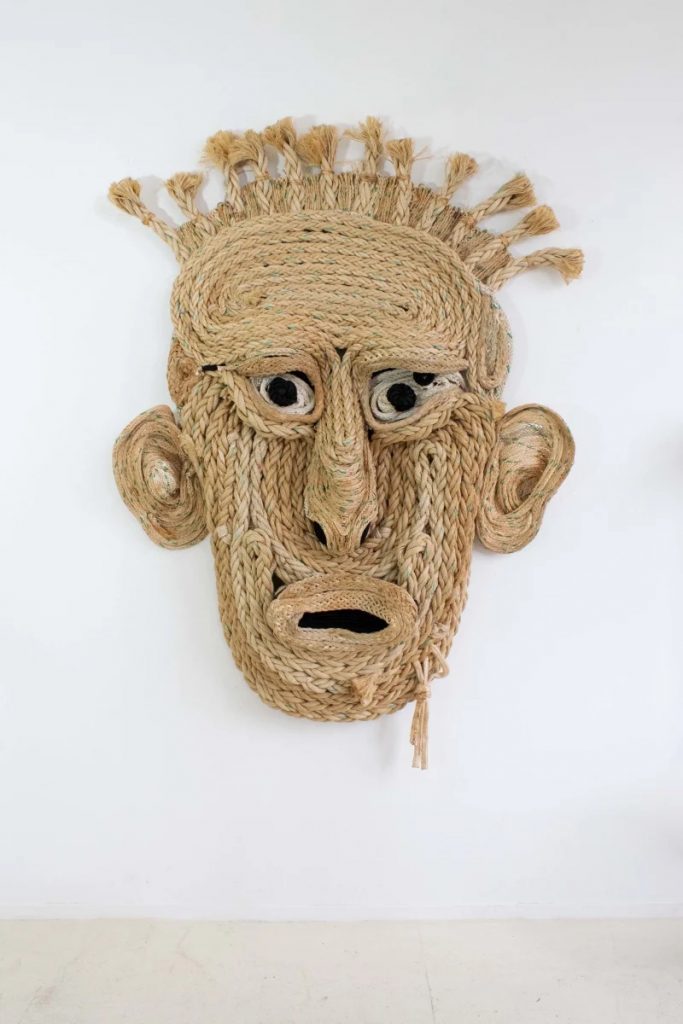
Schneider’s brightly coloured, theatrical and occasionally eery faces immediately evoke a reaction in the viewer. Sustainability is a keyword in her practice, and she makes a concerted effort to keep her ecological footprint as small as possible, while also taking the transport of the large-scale installations into account. The fragrant material of her works still bears the traces of the sea. That way, the artist is able to ask questions about environmental pollution and our own ecological footprint. By reusing the nets and ropes, she ensures that there is less waste in the sea, waste that could otherwise pose a danger to the marine animals that could get entangled in them.
For her newer work, Schneider is inspired by a multitude of sources. During Art Rotterdam, she shows a work in which she speaks out about the motherhood style of certain influencers in the digital age, while she is visually stimulated by the paintings from a church in Munich. Sometimes, Joana’s work is combined with that of her sister Leonie Schneider, who is also represented by Rademakers Gallery. For some works they were both inspired by the same subject: their grandmother’s house in Bavaria.
Schneider’s work has been included in the collections of Deloitte, the Stedelijk Museum Amsterdam, Museum Aalborg in Denmark and the Lakeside Art Collection, a collection that is currently on display (in part) in a rented compartment in the depot of Museum Boijmans van Beuningen. During Art Rotterdam, Joana Schneider’s will be shown in the booth of Rademakers Gallery and in the Prospects exhibition of the Mondriaan Fund. For the 10th time in a row, the Mondriaan Fund presents the work of 88 emerging artists here. In 2020, all of these artists received a financial contribution from the Mondriaan Fund to make a start in their career.
During Art Rotterdam you can see the work of hundreds of artists from all over the world. In this series, we highlight a number of artists who will show remarkable work during the fair.
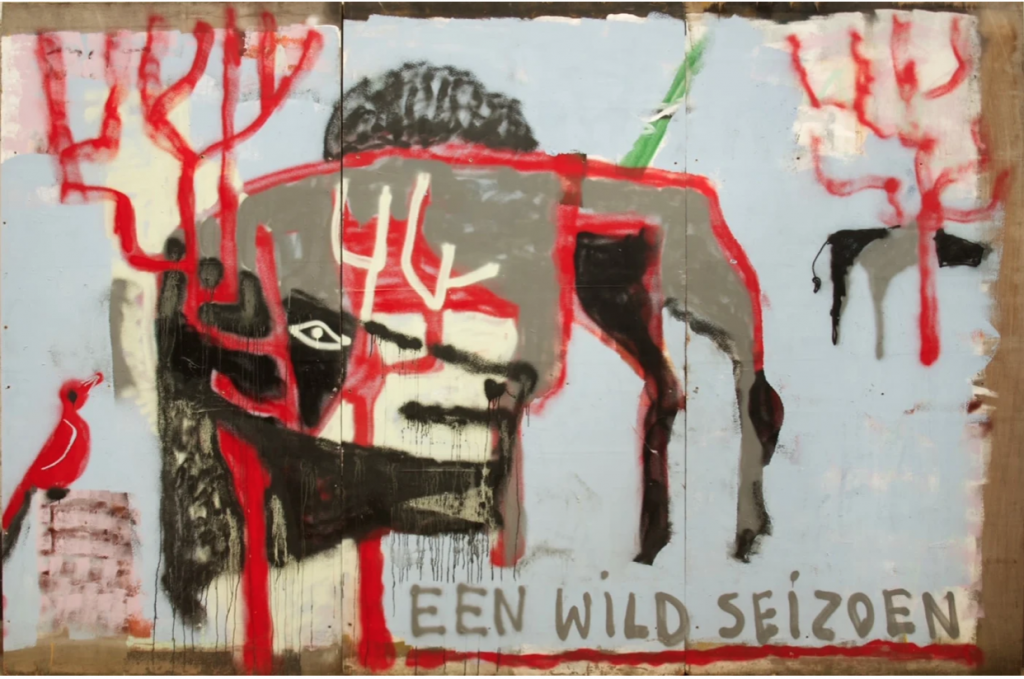
Not all artists thrive on a structured artist’s existence, in which the studio serves as a nearly magical safe haven, in which all of it has to take place. The Belgian artist Frederik Lizen, who has been working under the synonym En plein public since 2010, prefers to work outside. Usually in an urban context in Antwerp, where he lives and works. Within the city, he is mainly interested in the non-spaces and other types of grey public spaces. He prefers to paint his colourful works on the wooden fences that shield construction sites from the outside world, basically the opposite of a blank canvas. Sometimes Lizen takes the concept of ‘en plein air’ more literally, when he flees to the countryside. There, he exchanges his usual modus operandi — the use of spray paint, ink, collage and acrylic on monumental panels — for the more classical and small-scale use of watercolour and crayon on paper. The artist does have a studio, but he considers it more as a laboratory for experimentation, the place where he stores his materials. Perhaps his real studio is the gigantic building site on the Pelikaanstraat in Antwerp, where he came to an agreement with the project developer. It means that he is able to paint a hundred and fifty meter long wall of plywood panels.
As an artist, Lizen moves between two worlds, neither of which really feel like home: the world of contemporary painting and the world of graffiti. He prefers working in the public space because it literally brings his works to life. And it is precisely this changeability and spontaneity that are an essential part of the work. As soon as a work is left in the open air, Lizen loses control over it. The work is not only subject to weather conditions, but also to (street) artists and drunken students who paint over his work, or the police who sandblast or remove his work — as was the case when he made a critical work on the tragic fate of George Floyd, in which he also added references to the Belgian police, to indicate that it is not just an American problem. This socially critical approach is characteristic of his work, often executed with a good dose of humour. And it is precisely the limitations of working in the city that force the artist to work quickly with a limited number of materials. As a result, he developed a specific visual language.
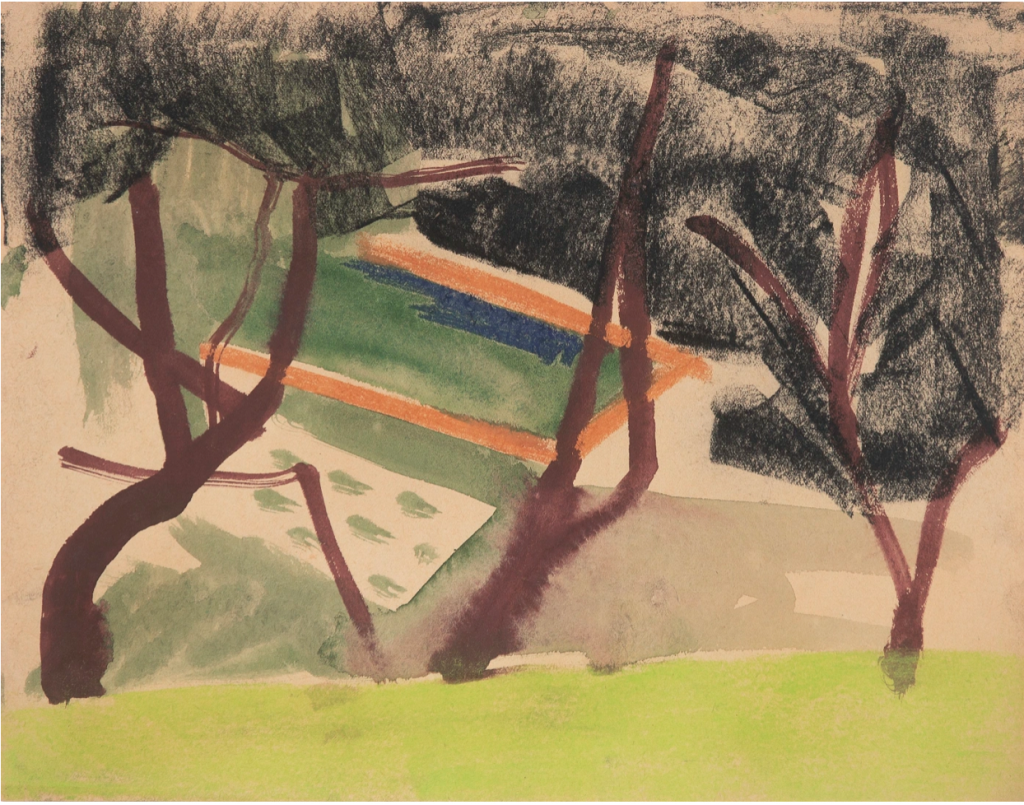
The conscious and unconscious adjustments to his work are an essential part of his working process. In many cases, Lizen returns to a particular work after a while, to continue working on it. Little remained of the work that read ‘I can’t breathe’ after the intervention of the police, but the remaining layers of paint suddenly imbued the panel with an abstract quality. Lizen then sold the work to a collector. Lifting the work from the public space to a white cube immediately provides it with a new context. But the artist himself determines which works are given an art context and which works end up in a waste container. Lizen’s work actually represents a certain democratic ideal: he invites people to intervene and that doesn’t stop with the creative process. In an interview with the Royal Museum of Fine Arts Antwerp, he noted that any buyer of his work has the freedom to continue working with it at will. Lizen: “If a work is sold, the owner can do what he wants with it: turn it into a cabinet or something… So the exhibition is not a final stage for me.”
Among other things, Lizen completed an Arteventura residency in Andalusia and he showed his work at SMAK during the Biennale Van België and in the Vebeke Foundation.
During Art Rotterdam, Frederik Lizen’s work will be shown in the Solo/Duo Section, presented by Geukens & De Vil.

During the May edition of Art Rotterdam, the NN Art Award will be presented for the sixth time: to a contemporary art talent with an authentic visual language and an innovative angle. NN Group has been a partner of Art Rotterdam since 2017 and has been awarding an incentive prize every year since then. An annually changing jury of art professionals makes a selection of four promising talents, from which a winner is ultimately chosen. Since last year, these four nominees also have a chance to win a public choice award, so that regular visitors to the fair can also cast their votes. The conditions are clear: the nominated artists have all been trained in the Netherlands and all show their work during Art Rotterdam. Each year, NN Group buys one or more works from the four nominees for its corporate collection. Last year, the NN Art Award (worth €10,000) and the NN Art Award Public Choice (worth €5,000) were both won by the Dutch artist Erik Mattijssen, who is represented by Cokkie Snoei. We interview him to find out what the prize has meant to him and how he has experienced the past period.
How did it feel like to win the NN Art Award?
Actually, the nomination that preceded it was the most exciting. Knowing that your work has been noticed, in the midst of so many colleagues, was flattering and uplifting. By now, I know what I’m worth, but it remains a strange profession that is accompanied by many uncertainties. These are often questions that I tend to ask myself in the studio: are the steps that I take exciting enough, is it not too indebted to other people’s work, or is it perhaps too careful? When you get this kind of recognition, some of that melts away. Moreover, I was in good company with the three other nominees: Priscila Fernandes, Lilian Kreutzberger and Claudia Martinez Garay. Perhaps the greatest luxury is the spacious, tall and well-designed NN Art Award stand, right in the middle of the fair, as well as the opportunity that this presented: to create a beautiful exhibition together. I am grateful to Cokkie Snoei, who had the courage to nominate me while I had become accustomed that such an award was more for young and up-and-coming talent. I found that encouraged colleagues of my age; that your work can also be valued on other grounds. When I also received the audience award on top of the NN Art Award, that was almost too much of a good thing, but of course I was very happy with it.
What has the past year been like for you, in terms of all the lockdowns? Do you notice that it influences your mood and/or your work in a substantive way?
I felt especially privileged that I have a job that I can continue, independently of others. Imagine playing in a band or making theater or having four school-aged children. Initially, it increased my focus, without any temptations to distract me. But I have to say that after the last lockdown in December, I noticed that I was suffering from the lack of shine to our lives. Amsterdam, the city I live in, is duller without all the hustle and bustle you were used to. Everyone is doing their best, but it’s still sad, all those cafe chairs on top of the tables, windows taped up and deserted streets. In my work, I have always wanted to offer a counterbalance, but there is undeniably a greater melancholy creeping in.
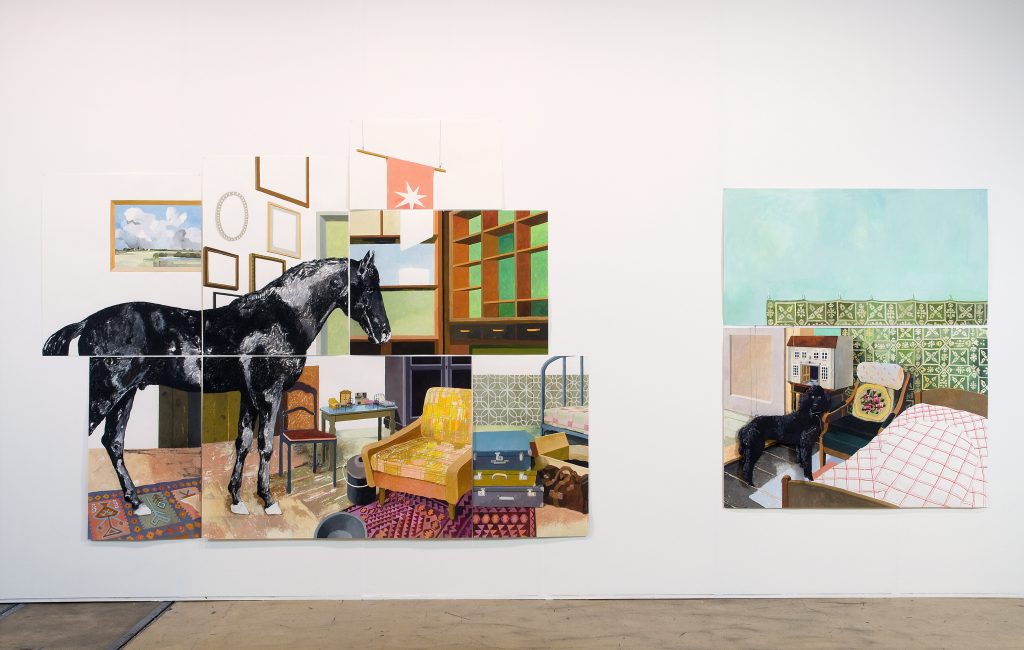
How did the works you showed during Art Rotterdam come about? Are you following a specific process?
During the six months prior to the fair, I was able to work in a pleasant studio in Berlin, from Livingstone Gallery Projects. That city was also locked down, so I had to come up with my own kind of rhythm. That is how I got to start every morning by painting a small gouache that had to be finished before noon. It turned out to be toys, not too complicated, a subject I had initially saved for the establishment of a large, overcrowded toy store. I made over a hundred, which we exhibited on a signle wall in Cokkie Snoei’s gallery booth. I also continue to work on large, composite scenes, interiors in which something takes place that you can’t quite get a grip on. There were two: Zum Abschied, based on a text by writer Judith Herzberg and Des Pudels Kern, inspired by Goethe’s bedroom in his house in Weimar. The fact that both new works were immediately shown to a large audience in the NN Art Award booth was a great encouragement and a nice addition to what we were able to show in the gallery’s stand.
Are there any particular things that you have been able to achieve thanks to the prize money? What did winning the prizes mean to you in concrete terms?
It often happens that I spend money that actually isn’t there yet, with full confidence that things will work out. In Berlin, for example, I already decided that the toy series could become a nice book, and that was ultimately financed for a large part with the prize money. Receiving the prize in the Art Rotterdam week also led to an interview on NPO radio 1 in the program Kunststof and I immediately saw my followers on Instagram increase in number after that! All in all, I felt like I was floating a bit that week.
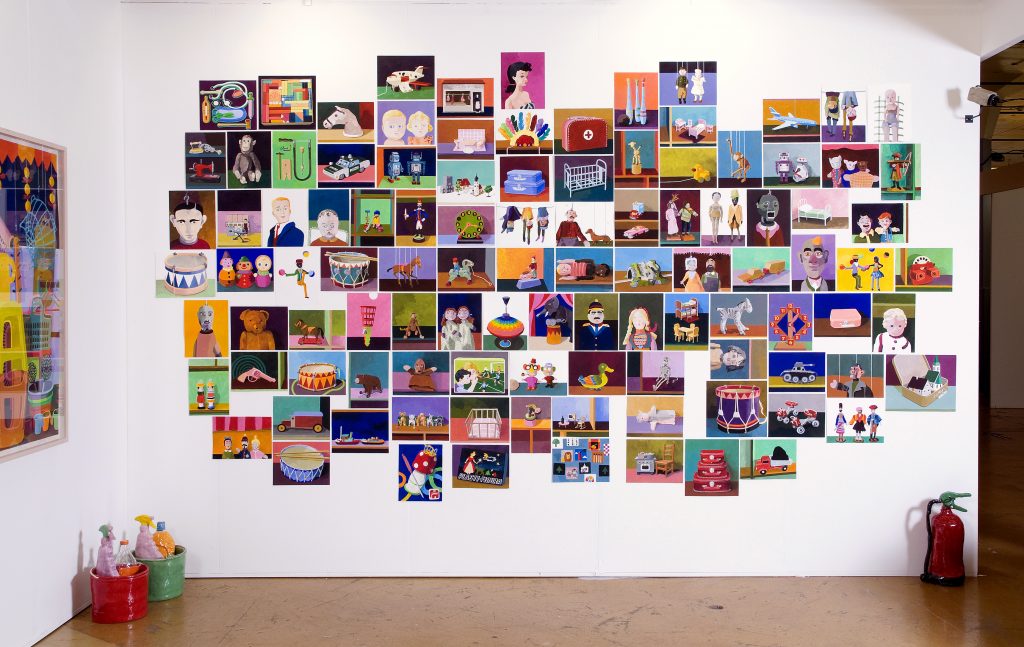
What is your ultimate advice for young artists?
That may sound obvious, but it isn’t: I would advise them not to chase anything: to make sure that the work you create is truly yours. That you don’t care too much about the criticism of others, or about what happens to be fashionable at that point in time. It’s important that you are the only one who decides which way to go. I would also like to recommend that they take the initiative themselves, to make sure that they exhibit their work somewhere and not just wait for gallery owners to start moving.But above all: the most important thing is to keep working, to take good care of yourself, to isolate yourself. I have seen too many former students of the Rietveld Academy — where I taught for a long time — who let other things take precedence. That their drive and passion disappeared and that the pleasure diminished simultaneously. And that’s a real shame.
As the winner of the previous edition, you can take a seat in the jury during this edition. What is it like as an artist to judge the work of other artists?
It was particularly nice to be part of such a competent and passionate jury, who made a point of careful viewing and speaking. After much deliberating and weighing, we came to a beautiful, diverse group of four nominees. It remains quite arbitrary of course, comparing apples and oranges. Winners and losers are uncomfortable categories in art.

This year the NN Art Award will be presented for the sixth time at Art Rotterdam to an extraordinary talent who has received an education in the Netherlands. The jury; Yuki Kho, culture journalist; Alexandra Landré, artistic director Stroom, The Hague; Charl Landvreugd, head of research & curatorial practice, Stedelijk Museum Amsterdam; Erik Mattijssen, visual artist and winner of the NN Art Award 2021; Elisah van den Bergh, advisor NN Art Collection has announced the 4 nominees:
The 4 nominated artists are:
Inez de Brauw – Brinkman & Bergsma
Vytautas Kumža – Gallery Martin van Zomeren
Thierry Oussou – Lumen Travo Gallery
Jennifer Tee – Gallery Fons Welters
The works of the 4 nominated artists can be seen in the NN Art Award booth at Art Rotterdam 2022.
The winner of the NN Art Award 2022 will be announced during the Press Preview of Art Rotterdam on Wednesday 18 May. The winner of the Audience Award will be announced online on Sunday afternoon 22 May. The public can vote online from mid-April to Saturday 21 May at midnight via the Nationale-Nederlanden website. The public can also vote at the exhibition stand during the exhibition days from Thursday 19 to Saturday 21 May.
The winner will receive a cash prize of €10,000 and an artwork by one of the four nominees will be purchased for NN Group’s corporate collection. The public favorite will receive a cash prize of €5,000. The winners will also receive an online article on GalleryViewer.com.
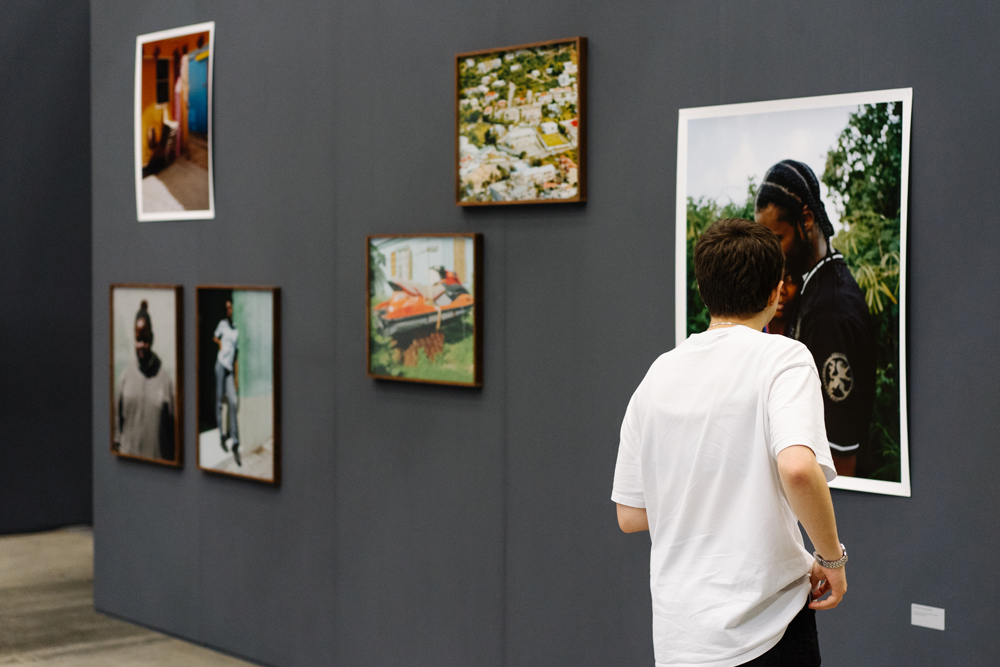
This year marks the tenth edition of Prospects, the recurring exhibition of the Mondriaan Fonds at Art Rotterdam. Each year, visitors get to explore work by artists who have recently received a contribution from the Fund, that they can use for the start of their professional practice. New this year is the extension of Prospects to the Expedition Building, directly opposite the Van Nellefabriek. The extension effectively doubles the amount of exhibition space in square meters. This year, visitors can immerse themselves into the work of 88 visual artists.
Their work is curated by Johan Gustavsson, who returns for the third time, in collaboration with Gabija Seiliute. Gustavsson is the co-director and curator at Project Space 1646 in The Hague, co-founder of The Hague Contemporary and he’s also active as a lecturer at the Royal Academy of Art in The Hague. Seiliute works as a creative freelancer, after finishing her studies in Art History and Curatorial Studies. In this interview, we ask them a bit more about this year’s edition of Prospects.

What does it take to curate an exhibition like this? What elements come into play?
GS: “Because the artists have already been selected, we are here to take care of the process, to guide them gently and to make sure that all of the requirements are met. It’s not like curating in the traditional sense, we have a coordinating role, in which we need to think in terms of the space, the budget and logistical restraints.”
JG: “In the end, our job is to make the artists look as good as possible and to make it a pleasurable event for visitors as well. The Prospects exhibition compares to the size of a biennial, and people generally take a few days to see that. So that is something we talk about with the artists, which artwork would be most suitable for an experience like that. We want them to consider the attention span of our visitors and their ability to absorb it all. But it’s always very much a conversation between us and the artists, who are often young and ambitious. It demands a bit of flexibility on our end. From a curatorial point of view, it’s about portioning out the works over two locations. The distribution hall in the Van Nellefabriek can be quite overwhelming. In collaboration with Mika Radescu from Tom Postma Design, we optimise the visitor journey, to make it more manageable. Some of the proposals were quite unexpected, for instance really large pieces. Then you have to consider how you can use the space in such a way that those works look their best. That is where we really rely on the buildup team. The main thing is to show much talent there is in the Netherlands at the moment. So you come up with creative solutions to make certain ideas work, within the budget and the challenges that a world heritage building can pose.”
GS: “We work in close collaboration with the artists and I rely on Johan’s experience and the entire production team. Because it really is a big production. I’m learning so much and I’m seeing a lot of art, soaking everything in. Of course, COVID made sure that things run a bit differently, but because this is the second year, we knew how to approach it.”
Have you been able to detect certain art world trends? The pandemic, metoo, the zoomification of our society and the climate must be recurring topics, as these themes are vital topics on our agenda, but is there anything else that stands out?
JG: “With 88 artists, the offer is extremely varied. What struck me was the production value. For instance, there will be quite a lot of video works on show during this edition, and they have fantastic production value. Of course, that is related to the accessibility of good cameras and other resources, which would have been much harder to get by a few years back. That is why Gaby and I decided to create a cinema, a special environment with a big screen and good sound, to honour that level of production. In total, there will be five works on show in the cinema.”
GS: “I noted many types of craft in the art works, things that were made with such precision. Of course, that may also be related to the increased accessibility of materials and machines.”
What is the role of the Mondrian Fund in the career of young artists? What does a starter’s contribution mean for these artists and how can it help them to get their career off the ground?
JG: “It’s quite unique, this type of support. To have this amount of support for fairly young artists, as far as I know, it doesn’t really exist anywhere else. The artists receive economical support, which is particularly crucial during the pandemic. That way, they can invest in their practice, both in time and materials. But it’s also incredibly valuable for them in terms of visibility: to show their work during Art Rotterdam. It’s almost functions like a quality mark.”
GS: “It’s also an opportunity to be noticed by the press, as well as a relevant network. Some artists are even able to sell work.”
JG: “Yes, some of these results are quite direct, like AkzoNobel buying work, or arts collectors in general. It’s also a time in which meaningful connections are forged between artists and galleries. Many curators will put artists on their list, perhaps for an exhibition years later. I’ve run 1646 for many years now and I’ve always gone to see the Prospects exhibitions during Art Rotterdam to see new art, I’m always scouting new talent that I didn’t know yet. But I may follow them for ten years before I work with them. So showing your work at Prospects can have long term effects as well. Some of the artists on show already have quite a career, the general level is really high and the extra space this year makes us, both the artists and ourselves, extra ambitious.”
The exhibition Prospects will be on show during Art Rotterdam, from 19 to 22 May 2022, in the Van Nellefabriek and across the street in the Expedition Building.
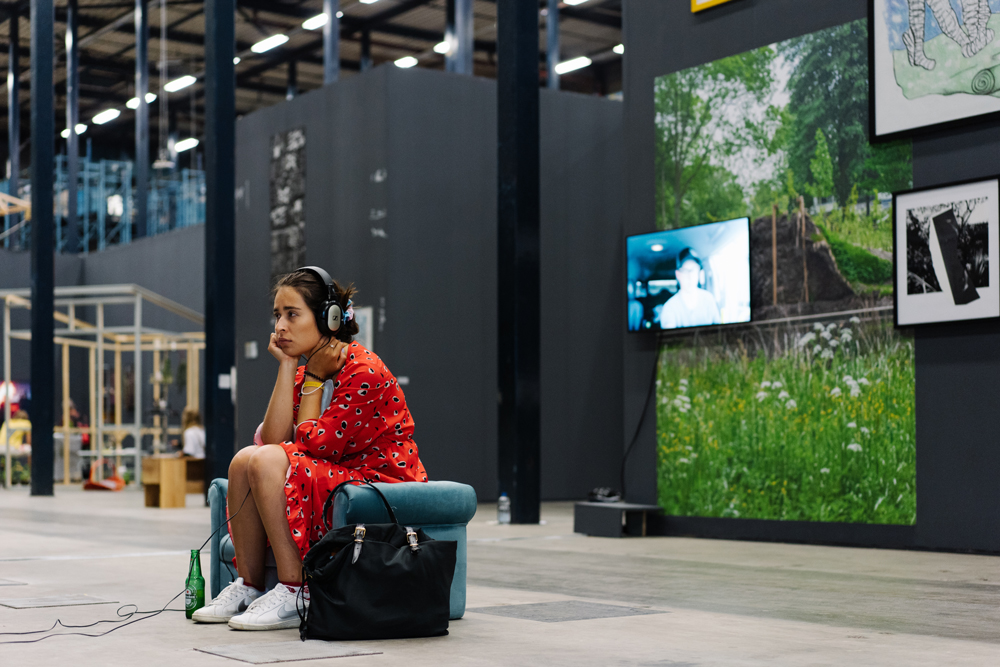
During Art Rotterdam, you can spot the work of hundreds of artists from all over the world. In this series we highlight a number of artists who will show remarkable work during the fair.
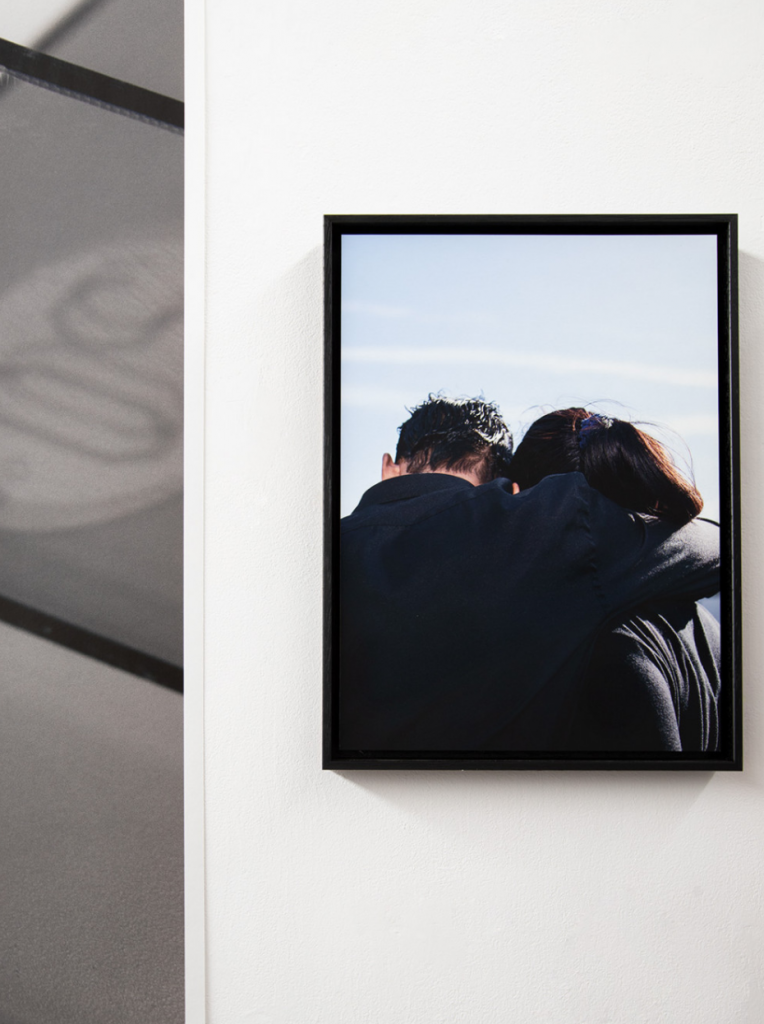
From a young age, the Polish-Dutch photographer Wiosna van Bon was extremely interested in how other people live. When she was six years old, she regularly walked to school alone, because her mother worked in nursery homes and her father usually worked several jobs at the same time. She would leave the house fifteen minutes earlier and then ring the doorbell at random houses on the way, asking if she could come in for a while. After a few months, these astonished neighbours would ring the doorbell at the six-year-old’s house; they appreciated the social calls, but perhaps not at a quarter to eight in the morning. It is a telling sign for the photographer’s curiosity, a curiosity that is strongly reflected in her work. During the same period, she also got her first analog camera, stimulated by her mother, who had a creative background and had completed a university degree in Poland. Van Bon’s father died at a young age, when the photographer was just twelve years old. It’s perhaps not surprising, then, that she has such a deep-rooted interest in the ways in which different family units function.
Van Bon studied documentary photography at the Royal Academy of Art in The Hague, but always retained an interested in psychology. She enjoys reading books by the British neurologist Oliver Sacks for instance, whose works offer a glimpse into the human mind. Van Bon actually does the same thing: she seeks out a niche social group and then tries to interpret them, to really understand them. When she accompanied her mother to the care facility where she worked, the photographer was fascinated by subtle differences. She noted how in some of the older homes, there was usually much more room for the individuality of the residents.
Later, she photographed people who claim to be hypersensitive to electromagnetic radiation, the predecessors of the people who are now firmly convinced of the possible damage of 5G. It’s always based on a genuine interest in their experience and combined with extensive research. For this project, she also entered into discussions with various experts, organisations and the people in question. She often spends months working on a project, which gives her a really good picture of the lives of these people. Van Bon noticed that she was sometimes confronted with her own conscious or unconscious prejudices and she hopes to encourage her viewers to look at these groups of people with a fresh perspective as well.
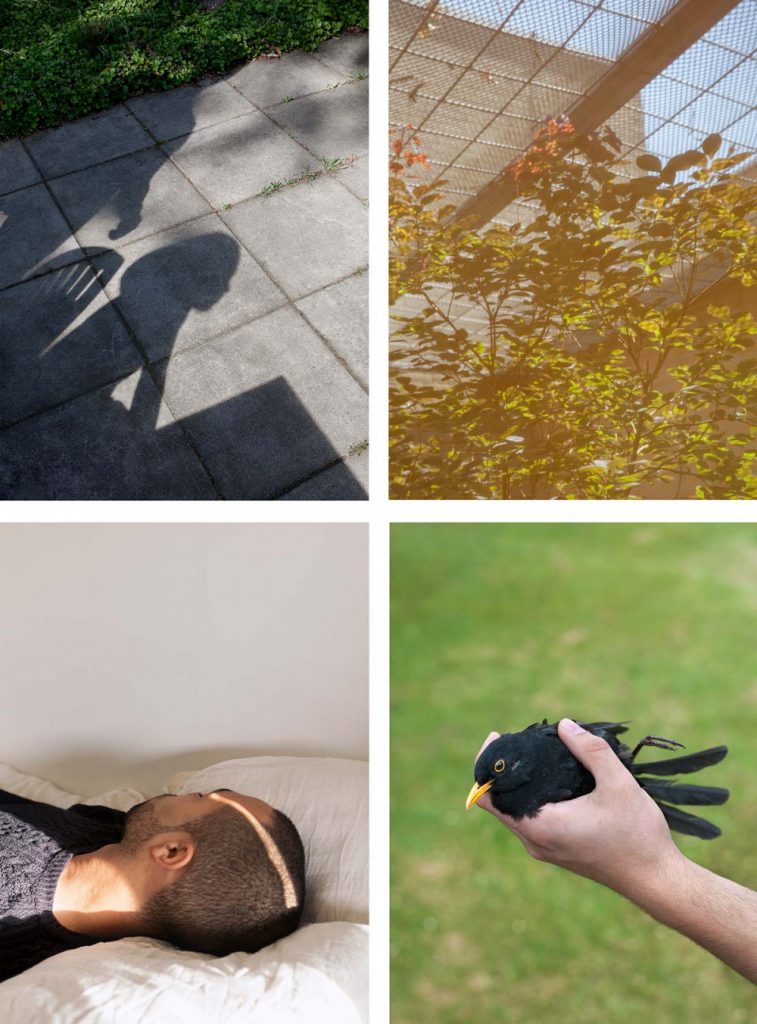
The photographer’s most eye-catching project is probably ‘Family Stranger’, which was published in 2020 in a photo book of the same name. In it, she puts the lens on relatives of detainees, who often feel judged by society. In a combination of images and quotes, she captures an underexposed narrative: how does your life change when a family member goes to prison? What does it mean to be an indirect victim of their actions? Family members will sometimes find themselves in financial trouble or are judged by those around them. A strange situation arises in which the prisoner ends up in a kind of time capsule where time seems to stands still, while the lives of their loved ones continue as usual. The series shows a glimpse of the interior of the Penitentiary Institution Vught, in combination with unrecognisable family members. Van Bon works in metaphors and symbols and depicts, among other things, shadows of bars, an inner courtyard, a clock or toys. Van Bon focuses on the (temporary) loss, the shame and vulnerability of these families, as well as the taboo that seems to overshadow everything. But at the same time, she also emphasises their humanity, strength, flexibility and perseverance. The photo book ‘Family Stranger’ was shortlisted for the Aperture First Book Award and The Author Book Award during the photography festival Les Rencontres d’Arles, among others. For a new series, the photographer focuses on homeless young people. What all of these diverse groups have in common is that they contain extremely lonely people, groups that are to some extent isolated from society. Van Bon looks at their lives and considers themes like power, behaviour and identity.
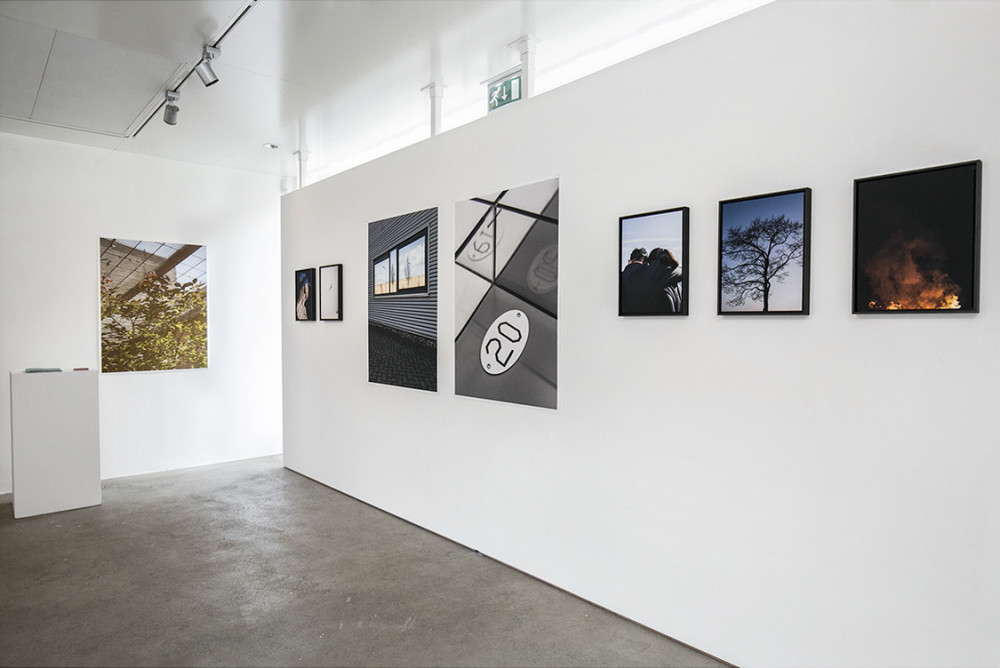
During Art Rotterdam, the work of Wiosna van Bon will be on show in the Prospects exhibition of the Mondriaan Fund. For the 10th time in a row, the Mondriaan Fund presents the work of 88 emerging artists here. In 2020, all of these artists received a financial contribution from the Mondriaan Fund to make a start in their career.
During Art Rotterdam, you can spot the work of hundreds of artists from all over the world. In this series we highlight a number of artists who will show remarkable work during the fair.
Otobong Nkanga wrote a poem for her last solo exhibition in Bregenz, Austria. She performed it as a clay tablet. In keeping with an exhibition that revolves, among other things, on the different manifestations of water and earth.
The reason Nkanga wrote a poem is that she doesn’t like writing texts explaining her work. “I don’t normally like writing texts about my work, but if you’d want me to explain my work then read a poem. What poetry does is to activate the emotions. To amplify the thoughts and to go beyond the language of politics and economy.”
Beyond the political and economic
Bypassing the political and economic language in order to address the viewer directly on an emotional level, that is in a nutshell what the multidisciplinary artist Otobong Nkanga (1974) aims at with her work. Through her wall hangings, drawings, video works, photography, installations and performances, she discusses almost every major topic of our time: think of the climate crisis, the extraction and distribution of raw materials and sustainability.
In doing so, she has an eye for both the places where the raw materials end up and the places that usually remain out of the picture: the parts of the world where raw materials are mined. The latter areas often coincide with former colonies, such as in West Africa, where the consequences of the colonial and current Western presence continue to affect societies to this day. “It’s important for me to work on the correlation of worlds that are visible to worlds that are not. My works move between the non-visible and the nontangible to places that are concrete, places that awaken the senses: touch, smell, sight, sound.”
Nkanga is considered one of the most important contemporary artists of African origin. Born in Kano, Nigeria, she grew up in France and lives and works in Antwerp. Her work was shown at the Venice Biennale (2019), documenta 14 (2017), and 14 Rooms in Basel (2014). In recent years, Nkanga has exhibited at the Gropius Bau in Berlin, Tate St Ives, Castello di Rivoli, and Kunsthaus Bregenz, among others.
Illustrative of her thinking is the answer she gave when asked what motivation means to her: “When you have a storm in Mozambique, that cleanses up a whole place. While some places are very turbulent, in others places it’s very calm, so you’re able to work and continue your life for 60 years. So to be able to be motivated is not entirely up to you. It is in the kind of environment and support that you get from people, places, landscape, weather, temperatures. All that makes it possible. I’ve been fortunate to have been in places where all those things align.” Where in the Western narrative everything begins and ends with the individual, Nkanga starts by taking into account environmental factors.
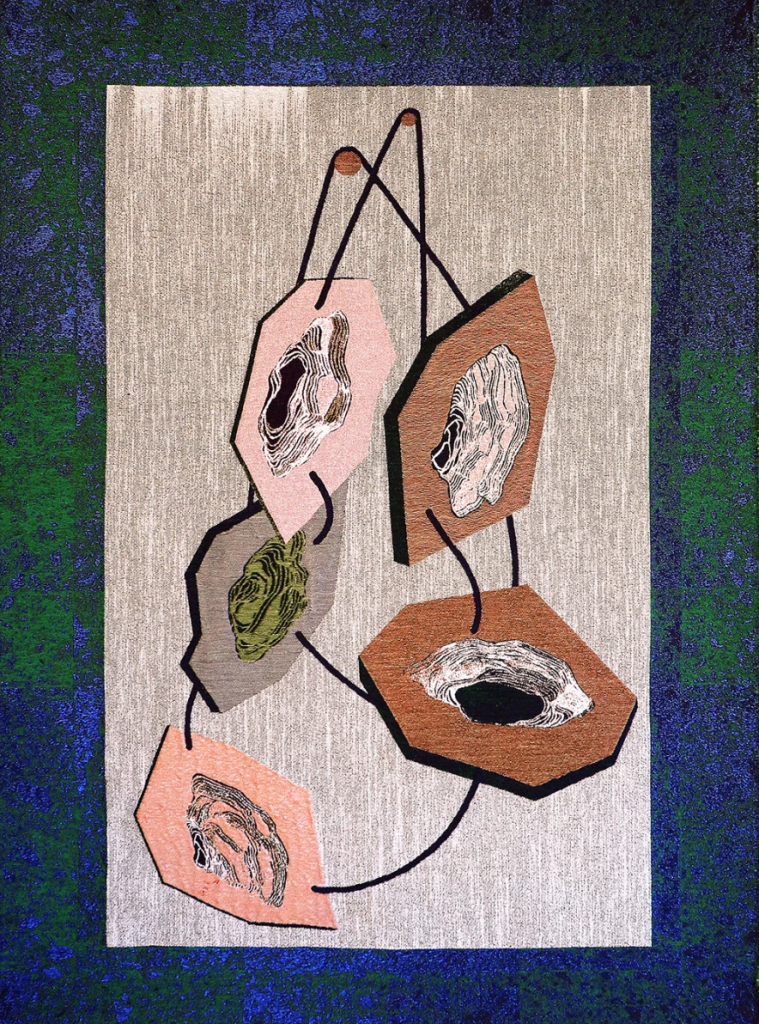
The Weight of Scars
In her work she shows the global interaction between these variables. You could therefore regard Nkanga’s work as a poetic system analysis – one with a glimmer of hope. A recurring theme in her work is the extraction of raw materials – such as mica, a raw material that is used in make-up, among other things – and its worldwide implications.
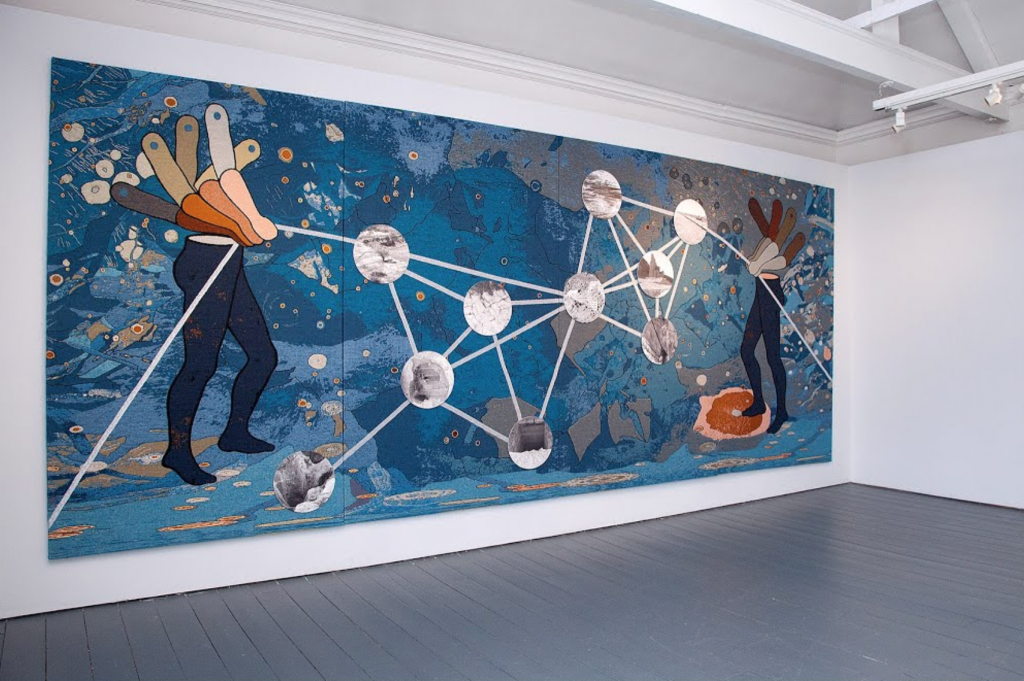
Nkanga made the tapestry The Weight of Scars in 2015 after a visit to the Tsumeb mines in Namibia. On the installation you see two headless figures on either side who seem to have a sticks in their hands connected to 9 photos of mine shafts, holes, pipelines and explosions.
Nkanga found it difficult to look at the gaps in the landscape. As she walked into the old mine shafts, she thought of the scars and trauma people must have suffered here and the wounds in the landscape the mine caused. “While I was there, I realized that Tsumeb looked like this due to the use of explosives by the German colonial overlords. By doing so they have not only accelerated the method of mining, but also permanently changed the fabric of society.”
According to Nkanga, our insatiable appetite for consumer goods such as telephones, computers and make-up has made us addicted to raw materials such as copper, gold and mica. Yet, if we realize that we are all connected through these raw materials, we can interact with our landscape and each other in a different way, according to Nkanga.

Unearthed
For Unearthed, the solo exhibition at Kunsthaus Bregenz last winter, Nkanga was given access to all 4 floors of the museum. She installed a tapestry on each floor of the museum showing one of the ways earth and water are intertwined. From the depths of the ocean, to the seasons, and the scorching heat of the sunlight in the desert, where plants grow despite the heat. As if nature always finds a way to carry on.
In addition, she had a tree stump installed on every floor between the floor and the ceiling. The slowly drying tree stump represents the gradual change. You cannot see the gradual but certain death of the tree, but there are signs from which the visitor can infer this. Call it an incentive to critically reflect on how we deal with our planet.
On the third floor, cables run from the dying stump to three glass capsules containing cuttings. In an interview, Nkanga says that tree was already nominated to be cut down, because it overshadowed other trees, preventing them from growing. Sometimes leaving a hole isn’t bad. Still, one Nkanga decided to plant new trees elsewhere so as not to burden the local ecosystem too much.
To celebrate the Kunsthaus’s 25th anniversary, the museum has rented the 16th-century Scuola di San Pasquale during the Venice Biennale to draw attention to its forward-thinking exhibition program. In addition to a presentation of work by Anna Boghiguian, the Kunsthaus shows work by Otobong Nkanga.
Tied to the other side
At the upcoming edition of Art Rotterdam, the Lumen Travo gallery will show a new tapestry that has never been on display before. Tied to the other side measures 3.5 x 6.5 meters and was woven according to Nkanga’s specifications and drawings by the Tilburg Textile Lab on the recently purchased Dornier loom. This is a state-of-the-art loom that can handle complex patterns and structures and can weave rugs up to three and a half meters wide.

Tied to the other Side is about how we deal with the elements of earth and water. Our appetite for raw materials has taken on such forms that drilling is also taking place in deeper places in the sea. On the blue tapestry we see this craving take on the shape of a scaffold-like structure with arms, plants and a container attached to it, and in the shape of a needle that pricks a human body. The needle represents the machinery and system that exploits people, land and sea. On the left you see a number of staffs. One of those staffs emits bright rays that indicate as yet unknown possibilities. Rays projecting into the future.
During Art Rotterdam you will find the work of hundreds of artists from all over the world. In this series we highlight a number of artists who will show special work during the fair.
The kinetic work of Dutch installation artist Philip Vermeulen
Philip Vermeulen is known for manipulating and isolating — and then maximizing or minimizing — physical phenomena such as light, sound and movement. This gives rise to what he calls ‘hypersculptures’: kinetic sculptures that move so quickly that their physical properties seem to transform before your eyes. With his latest installation ‘Fanfanfan’, which can be seen in the Prospects section, Vermeulen responds to a period of relative stagnation. For this installation, he bends bundled white light into thousands of pieces of color, using fans that move so fast that the projected white light is split and reflected multiple times.
With his practice, Vermeulen builds on the tradition of experimental kinetic art of art movements such as the ZERO movement, but also light art, op art, sound art and audiovisual art. Like many other artists from these movements, Vermeulen is interested in the ways in which our eyes translate images for our brain, and vice versa. In his installation ‘Flap Flap’, for example, we see a canvas that flutters so quickly that it seems to stand still. The effect is almost hypnotic. In other installations he uses stroboscopes to create visual illusions.
But Vermeulen’s experimental installations are characterized by movement and sound. Sometimes so hard that it becomes overwhelming. As a spectator you experience conflicting feelings: the works are aesthetic and elusive, but at the same time sharpen all your senses. There is always a certain danger lurking, because what if the device suddenly does something unpredictable? If you allow yourself to be sucked into that field of tension, the installations can even have a mind-expanding effect. Vermeulen consciously seeks out that field of tension: the border where beauty, fear and destruction overlap. His installations sometimes seem dangerous, such as his graduation artwork, in which tennis balls were fired at 150 kilometers per hour against a wooden sound box. Admittedly in a safe way — provided you as a visitor followed the directions carefully — but the tension and potential danger must have been clearly palpable.
Vermeulen: “My installations are all quite large and they are all about a kind of existential fear: when does the machine go so fast that you no longer trust it. When does it get visually so hardcore that you actually want to leave, but at the same time stay attracted.”
Although his installations sometimes seem to rage on in an uncoordinated way, there is indeed a choreography worked out in detail, as the artist himself refers to. An enormous amount of research precedes the installations and the artist is currently studying machine learning, among other things.
Vermeulen initially studied at the Film Academy for a while, followed by two years at an art academy, where he found the art history classes particularly traditional. He was only really in the right place when he ended up at the ArtScience Interfaculty, an interdisciplinary partnership between the Royal Academy of Art (KABK) and the Royal Conservatoire in The Hague. There was plenty of room for experimentation here and during this period Vermeulen mainly explored the limits of his materials. He graduated summa cum laude in 2017.
In 2020 Suzanne Swarts, director of Museum Voorlinden, nominated him for the Volkskrant Visual Arts Prize 2020. Swarts: “Philip Vermeulen’s work is about looking, but even more about feeling. Vermeulen makes compelling performative installations in which he stimulates all the senses with sound, light and movement. In each work, he once again allows science, technology, visual arts and theater to merge into unforgettable sensations with great ease.” In the same year, Vermeulen was also nominated for a Golden Calf in the category ‘Best Interactive 2020’.
Vermeulen’s installations have previously been shown in the Stedelijk Museum in Amsterdam, during Into the Great Wide Open, in the Berlin club Berghain, during TodaysArt and in the Stedelijk Museum Schiedam and Rijksmuseum Twenthe.
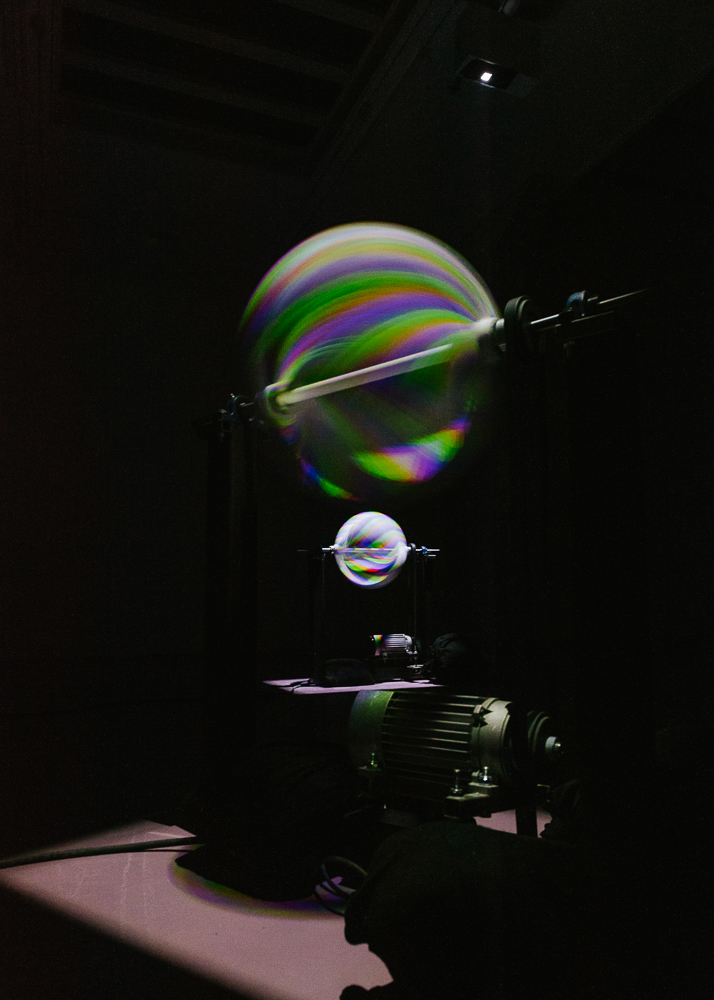
The work of the Dutch installation artist Philip Vermeulen can be seen during Art Rotterdam not only in the booth of No Man’s Art Gallery (Main Section), but also in the outdoor presentation around the Van Nelle factory and in the Prospects section. For ten years now, the Mondriaan Fund has presented work by artists who recently received a contribution for the start of their professional practice.
Watch the video Fanfanfan | Philip Vermeulen here
During Art Rotterdam you will find the work of hundreds of artists from all over the world. In this series we highlight a number of artists who will show special work during the fair.

Minne Kersten works at the intersection of art and literature and is fascinated by the relationship between image and the written word. She completed a bachelor’s degree in Image & Language at the Gerrit Rietveld Academy and a residency at the prestigious De Ateliers institute in Amsterdam. She also studied art history for a year and participated in the Slow Writing Lab, a postgraduate course of the Dutch Foundation for Literature, which focuses on creative writing. The artist’s literary background is expressed in large-scale installations, videos, sculptures and drawings, which are part of a fictional experiential world. In addition to her visual art practice, Kersten also writes poems and essays.
The artist’s works and visual language arise from a deep-seated desire to tell stories and, in a sense, function as a support for those stories. Sometimes the sculptural sets tell their own story. Chaos, decay and deconstruction are emphasized by the frequent use of natural materials and building materials. The animal or human figures in her narratives often relate to each other in unexpected ways and sometimes there are absurdist or eerie elements. Reality and imagination seem to flow seamlessly into one another in Kersten’s works.
Mourning and loss are recurring themes. The artist has done a lot of research into the symbolism and mythology surrounding mourning and loss in painting, sculpture and cinema. These are often symbolized by black birds, sometimes with mythological connotations. She recently made the video artwork ‘Constant Companion’ (2021) in a chapel in Hoorn, in which the leading role is reserved for a raven. Kersten films the bird close to its feathers as it explores its surroundings. Four hours of material were reduced to six minutes for this.
Kersten is also interested in the ways in which people relate to architectural structures and their immediate living environment. She analyzes spaces as psychological constructs, referring to theories such as the Stone Tape theory and place memory, which state, among other things, that certain spaces are permanently affected when emotional or traumatic events take place.
Later this year, her work will be featured in The Studio series at the Bonnefanten Museum in Maastricht, a special, small-scale solo exhibition for young artists. Kersten is also showing her work this year in The Living Art Museum in Reykjavik. In addition to the contribution from the Mondriaan Fund, she also won various other grants and grants, including from the Niemeijer Fund, the Dommering Foundation, the AFK and the Prins Bernhard Cultuurfonds.
During Art Rotterdam, the work of Minne Kersten can be seen in the booth of Annet Gelink Gallery as part of the video section Projections and in the Prospects exhibition of the Mondriaan Fund. For the 10th time in a row, the Mondriaan Fund presents the work of 88 starting artists here. In 2020, all artists received a financial contribution from the Mondriaan Fund to start their career.
During Art Rotterdam you will find the work of hundreds of artists from all over the world. In this series we highlight a number of artists who will show special work during the fair.
Modern solutions require modern problems
Just before the pandemic, Lund gave a presentation about his work in Ljubljana. It featured, among other things, trivial inventions for modern inconveniences, such as a magnifying glass for the small screen of your mobile phone. Or a mobile projector that allows you to share your screen with others in a decent way. The audience laughs. Finally, Lund shows an apparently equally odd device that manipulates your phone’s pedometer by means of a constant rocking motion. Why was this device invented, you ask? In China you get a discount on your health insurance if you demonstrably exercise a lot. Modern solutions require modern problems.
It is not surprising that Lund (SE,1984) has an eye for such inventions, because a number of central themes of his work come together: power relations, data analyses and algorithms, and how to circumvent them.
FOMO
The above themes are already reflected in early exhibitions such as Fear of Missing Out (Showroom Mama, Rotterdam, 2013). One of the works is a photo collage featuring the 100 most important curators. At least, according to Lund’s algorithm. According to Lund, his knowledge of the who-is-who would give him an edge over the average collector, he would be more aware of trends and appreciations.
At the beginning of his career, Lund, who was educated in the Netherlands, was sometimes accused of making art about art, including jokes that only insiders understand. Lund’s work is certainly playful and funny, but his message is broader. In 2019, for example, he set up the London Photographer’s Gallery as a twelve-person editorial team for making propaganda and fake news. Here too, Lund was interested in the data collection and Cambridge Analytica’s anything but neutral algorithm, which mainly concentrated its efforts on the leave voice.
Strings Attached
It is not a coincidence that Lund initially ended up in the art world; it’s a small, uncluttered version of the real world. According to Lund, the art world has a classic top-down structure, with a relatively small group of people at the top deciding among themselves what is good art. Underneath is a broad layer of gallery owners, collectors and artists.
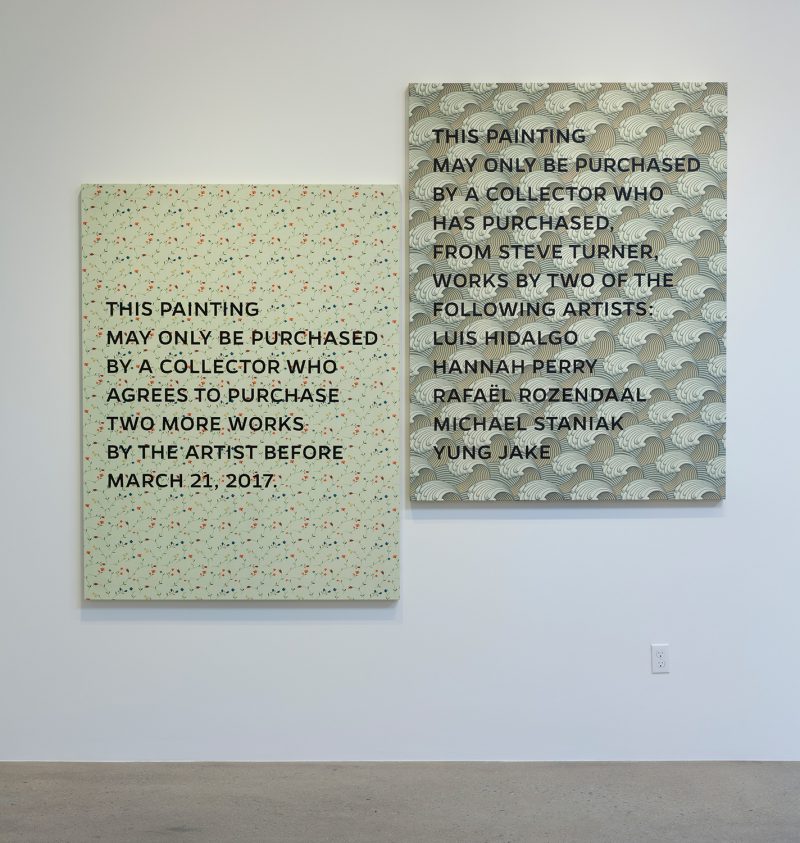
The power relations between the players in the bottom layer are discussed in the series Strings Attached (2015). Although the artist is the producer, he has little to say about how his work is marketed. Gallery owners can decide not to sell work to a collector no if the collector has not previously purchased a work from the gallery or only sell if a customer immediately buys two works or oblige the buyer to donate one of the purchased works to a museum. Lund circumvented these practices by stating the conditions on his canvases.
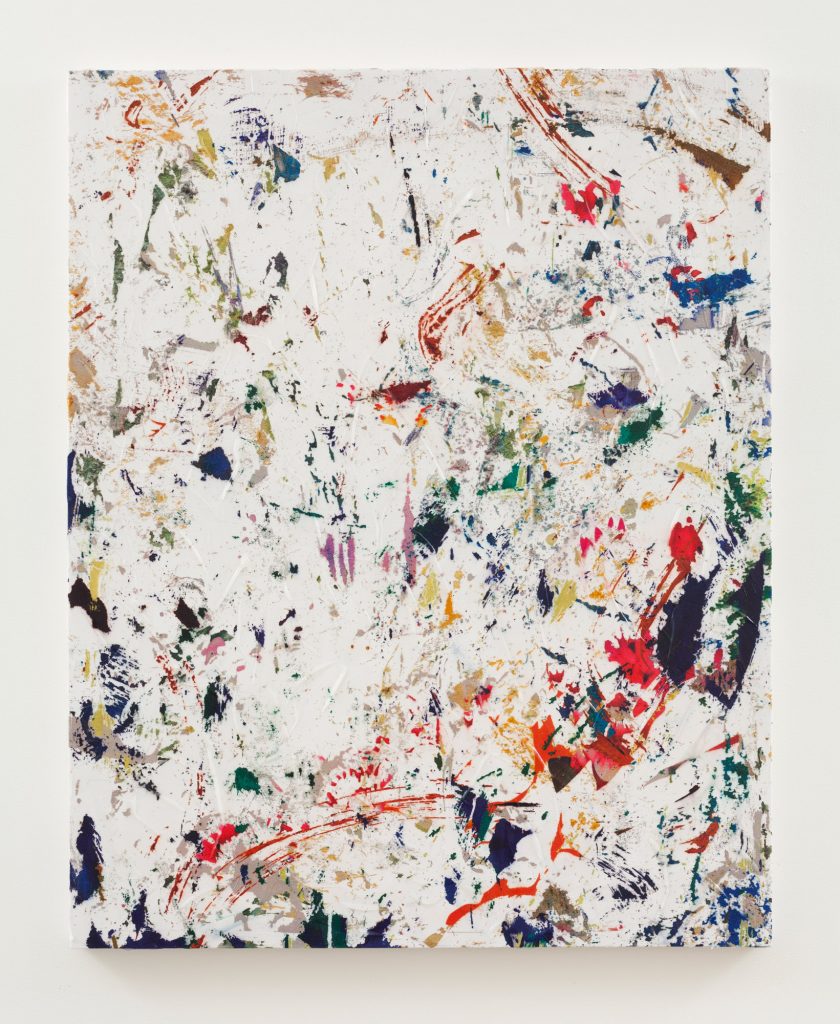
Invest in Jonas Lund
Of course, Lund also saw the possibilities of crypto currencies early on. In 2018, he developed his own Jonas Lund Token, including a daft corporate logo and advertising materials. At art fairs, the booths of his gallerist therefore looked exactly like those of a financial services provider.
This may seem like a far-fetched joke, but data collections and power relations play a major role here too. You can get JLTs by buying one of Lund’s work or by providing him with a service, such as inviting him to a lecture or advertising his work. Lund set up his token in such a way that owners of the JLTs are de facto shareholders in Lund’s artistic practice. He regularly puts questions to his shareholders and their advice is binding.
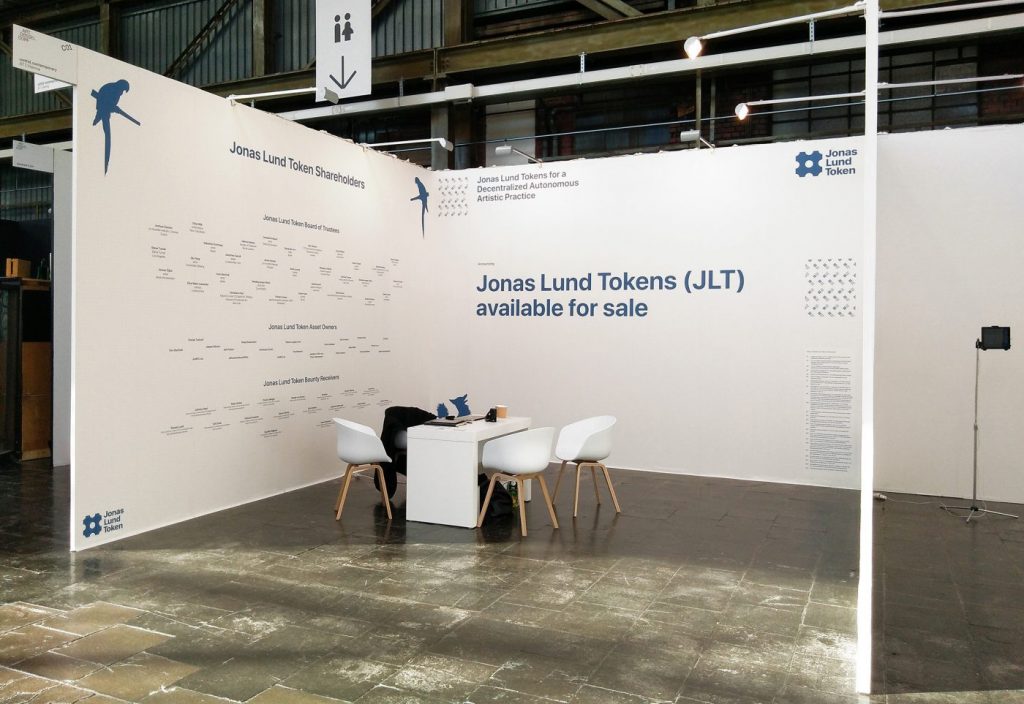
For you, by you
At Art Rotterdam, the Milanese gallery Bianconi is showing the work of this Swedish multimedia artist from the For you series from 2021. Lund created this series in response to the hyper-personalization that takes place on social media. On your favourite platform you are continuously served new content that matches your taste with the aim of letting you spend more time online.

In the works of this series, which include elements of recently auctioned well-known works of art, Lund translated this principle into a series of works that continuously adapts on the basis of algorithms. Just like on Instagram and Tiktok, Lund’s algorithms analyse the way the viewer relates to the works. As a result, the continuously changing compositions gradually match the behaviour of the viewer more and more. Because you, as a viewer, put together the works yourself, just like your social media feed, you become more and more entangled in your own bubble in which you never see anything unwelcome again.
Jonas Lund’s work can be seen in the Solo/Duo section, at Galleria Bianconi.